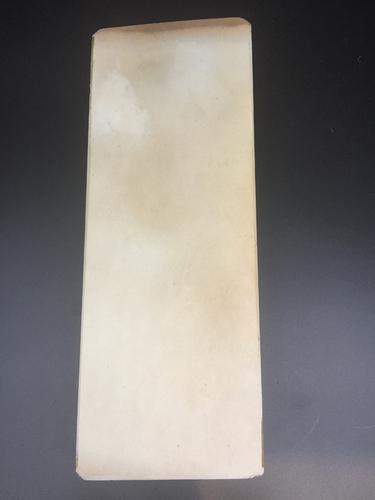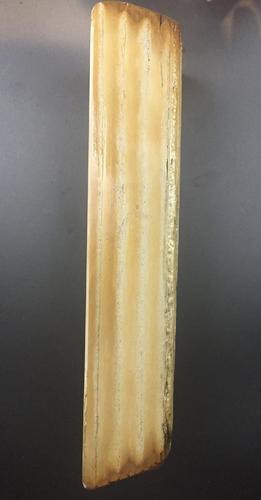Results 901 to 910 of 982
Thread: J-Nat club
-
11-12-2019, 05:28 AM #901Senior Member

- Join Date
- Feb 2019
- Posts
- 102
Thanked: 7
Perhaps, can be and on suspension to end. But I prefer the results after a clean stone with water.
https://youtu.be/cYAccIRga38
-
11-12-2019, 10:20 PM #902Member

- Join Date
- Dec 2018
- Posts
- 52
Thanked: 13
Is this hair depended? If I touch it, I cut it. Never been good at hair whittling.
-
The Following User Says Thank You to cman670 For This Useful Post:
esveka (11-13-2019)
-
11-12-2019, 10:41 PM #903
-
11-13-2019, 08:53 AM #904Senior Member

- Join Date
- Feb 2019
- Posts
- 102
Thanked: 7
It's not necessary. The razor will shave even if it can't cut the hair lengthwise. But I prefer to shave with a razor that can cut hair both lengthways and across. But everyone decides for himself. At all like would have such stumbling, which will allow cut hair along not from the tip to the root, and from root to the tip.
Meanwhile, it turns out the only way
https://youtu.be/desvssMkaeILast edited by esveka; 11-13-2019 at 09:07 AM.
-
12-09-2019, 03:45 PM #905

Occasionally I get a stone that makes me feel like a kid on Xmas. Well this very hard suita is one of those stones.


-
The Following User Says Thank You to alex1921 For This Useful Post:
esveka (12-09-2019)
-
12-18-2019, 04:56 PM #906Senior Member

- Join Date
- Feb 2014
- Location
- Oklahoma City
- Posts
- 220
Thanked: 71
Wow beautiful stone, what's the dimensions???
Matt...
-
12-18-2019, 05:27 PM #907

Thank you.
It's 230x85x42. Brick size
-
12-28-2019, 06:03 PM #908

Here are a couple of new acquisitions, the karasu arrived Saturday and the butterscotch kiita on Christmas eve. They’re both razor grade but I’m still evaluating them of course. The kiita is a darker butterscotch color that Alex Gilmore said is indicative of old stone, older than the brighter, greener kiita mined later in the 50s and 60s. It’s Nakayama based on the patches sparkling black skin. Possibly a real Maruichi - they never stamped stones, closed in the 1920 IIRC, and were known for their fitted bases. It measures 195mm long and about 70 wide, so a bit of an irregular 60 cut stone. I like the size a lot, oversize for razors really, but most are still small enough to hand hold if you want.
The barber size karasu has some depth to the pattern and is a welcome addition as razor karasu always are in my shop.My doorstop is a Nakayama
-
The Following User Says Thank You to Steve56 For This Useful Post:
esveka (12-28-2019)
-
01-09-2020, 05:20 PM #909

OK this is going to be a really arcane post, or series of posts about cutting jnat nagura from a larger stone. The first question is always ‘why would you cut up a perfectly good jnat into smaller pieces?’. Excellent question, and one that I always think about a lot before I cut one. You can make ‘em smaller, but you can’t make ‘em bigger. There are 2 reasons, one is that it’s really difficult to source razor tomo in the west. By the time that you eliminate the ones from vendors with low grit, just not fine enough, or have defects, buying razor tomo in the west has always been a non-productive excercise for me. Second reason, sometimes a stone is shaped, or has defects, such that the most efficient use of the grit is as a slurry stone. You could hone a razor on this stone for years but sooner or later, it will be tomo feed. BTW, I did hone on it several times, the best tomo come from razor-tested donors. I’m always on the lookout for suitable donor stones and found the one in the first image, stamped Nakayama, and with a shape only a mother could love, so no one wanted to bid on it. It also has a line down the middle that’s non-toxic, but if you’ve ever cracked one open you know what they are.
You can actually see two lines, the natural line (crack) that goes down the end of the stone (and all the way through), and a pencil line. The natural line is angled a bit, and the pencil line crosses it near the center of the stone. I want to use the saw cut to make the resulting tomo more rectangular/regular, so my saw cut will start to the left of the crack at the top (the notch in the top edge is caused by the crack giving way) and ending to the right of the crack near the bottom edge. So I’m hopefully going to freehand the saw down that crack and remove it.Last edited by Steve56; 01-09-2020 at 05:35 PM.
My doorstop is a Nakayama
-
01-09-2020, 05:28 PM #910

Here’s the stone with my pencil line transferred to the back in red Sharpie, the stone will be face down on the saw table and I need a visible guide on the back. If you look closely, you can see the crack just to the left of the red line at the bottom edge/corner.
Et voilá - I did as well as I could reasonably hope for with the saw. The reddish iron lines are where the saw entered and left the crack, very little left of it. You can see the remains of the iron-filled crack in the third image, it angles up to the cut surface and appears as the reddish line/area. And finally, three shop size and one small nagura, all pure and ready for a coat of cashew lacquer. If you look at the stone in the upper right, on the top edge, you’ll see a tiny smudge of reddish color, the last remnant of that line and nothing to bother with anymore.My doorstop is a Nakayama


 2050Likes
2050Likes LinkBack URL
LinkBack URL About LinkBacks
About LinkBacks







 Reply With Quote
Reply With Quote
